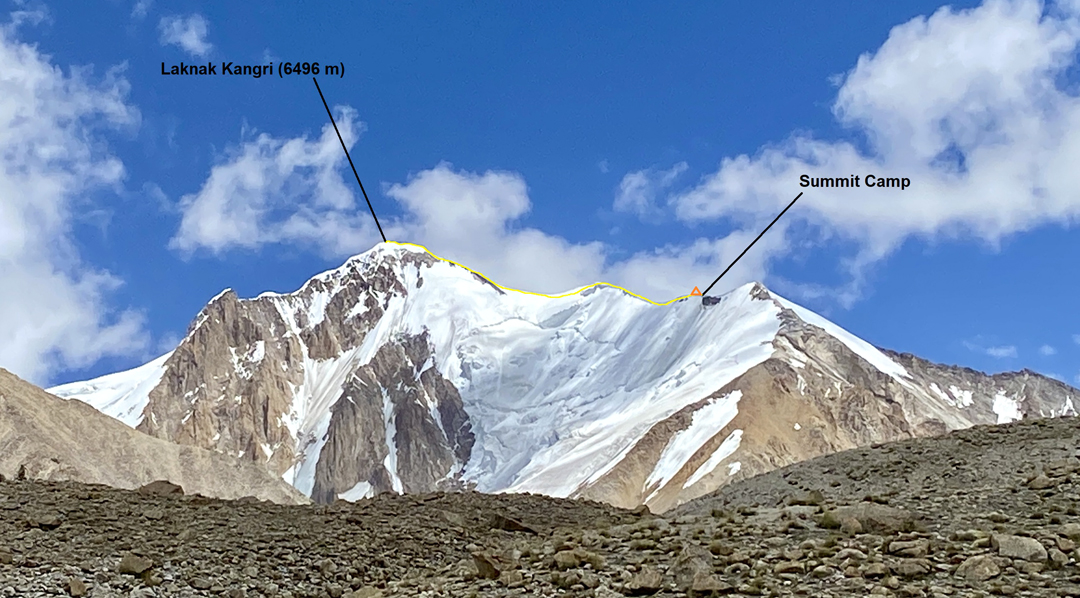Laknak Kangri, South Face and Southwest Ridge
India, Ladakh, Eastern Karakoram, Saser Muztagh
Driven by my desire to return to the Thangman Lungpa (valley), which I had partially explored in 2023 (see AAJ 2024), Sudeep Barve, Prajakta Ghode, Mahesh Kendurkar, Yogesh Umbre, and I formed a joint expedition organized by the Himalayan Club and Chakram Hikers, planning to attempt unclimbed Peak 6,496m (34°56’0.58”N, 77°38’15.99”E). If we found this unfeasible, there were many other objectives we could attempt.

After initially being sent back to Leh by a military check post at the start of the road to the Saser La—despite having the proper clearances and having traveled the same road one year earlier—we managed to get the requisite permission, and on August 1 our journey to the Thangman Lungpa continued. We spent three nights at an intermediate camp in the valley before settling into base camp on August 6. We then split into two teams. One party climbed onto the ridge on the far (east) side of the north branch of the Thangman Glacier so they could look at the upper south flank of Peak 6,496m, while another climbed scree slopes up the south face to find a site for Camp 1.
Studying our photos from the day, we saw a possible route through the icy slopes above Camp 1, but it was riddled with crevasses. After stocking Camp 1 (5,670m), we spent the night there on August 10. Over the next two days, we sought a route up to the southwest ridge. Initially, Sudeep, Yogesh, our climbing Sherpas Phuphu Dorji, Phurten Bhutia, and Sangbu Bhutia, and I were defeated by gaping crevasses. On August 12, we tried a different line, climbing halfway up the face, then traversing left for about 100m to the lip of a vast crevasse. We followed this crevasse diagonally down to a spot where it narrowed and was crossable. This solved the puzzle, and we continued up steeply for 200m to the southwest ridge. We had fixed 500m of rope from Camp 1. The route to the top now looked feasible.
On the 13th, we shifted to a summit camp at 6,100m on the southwest ridge. Leaving at 5:30 a.m. on August 14 in windy conditions, we roped up and climbed the ridge, keeping to its south flank to avoid large cornices. We fixed 100m of rope on the final steep section and reached the top at 9 a.m. A clear sky allowed a panoramic view of most of the East Karakoram’s 7,000ers. However, degradation of the glaciers in this region was alarming. There had been negligible snowfall the previous winter, which had left glaciers barren.
Like a golden eagle, this peak dominated the valley, so we decided to name it Laknak Kangri, the Ladakhi name for golden eagle.
—Divyesh Muni, India



